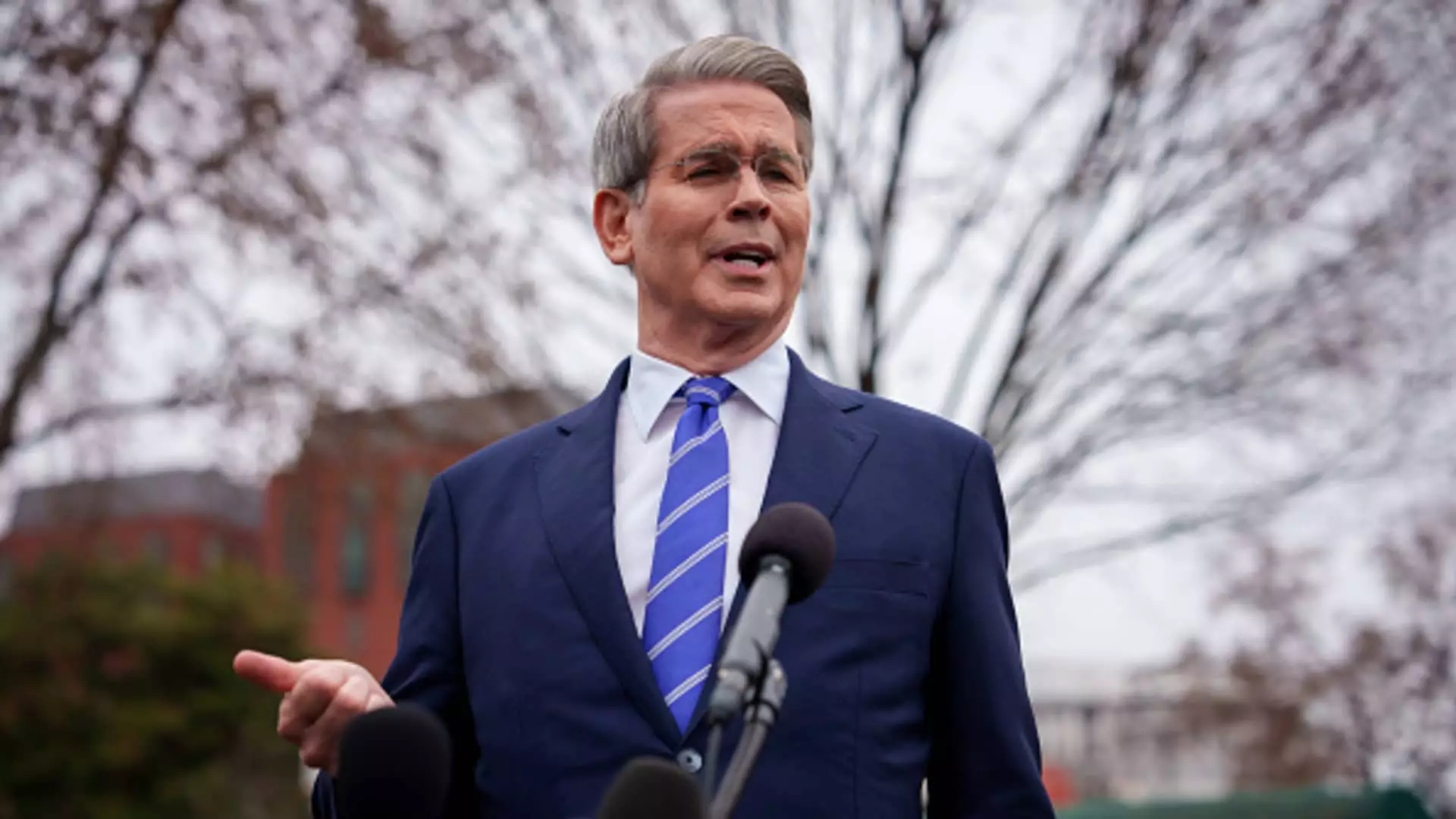The stock market’s recent volatility illuminates an often-overlooked reality: the fragility of investor confidence in the face of technological disruptions. Treasury Secretary Scott Bessent’s remarks emphasized that the sharp decline in the markets primarily stemmed from the emergence of new Chinese AI competitors rather than the protectionist policies championed by the Trump administration. His assertion invites us to scrutinize the reliance investors have on a few key tech giants, conveniently dubbed the “Magnificent 7.” The orchestration of these titans is crucial, yes, but their synchronicity can be equally precarious, especially when external forces destabilize their promising constellations.
Today’s news cycle isn’t merely ruffled by tariffs and trade; it also swells with seismic shifts brought about by technological advancements. The recent rout can largely be attributed to the alternative provided by DeepSeek, a Chinese AI startup boasting sophisticated language models that not only challenge American tech supremacy but do so at a fraction of the cost. To put it bluntly, the rapid rise of such competitors signals a weighty reality check not just for investors, but for policymakers who previously viewed tech as a one-way ticket to economic invincibility.
Tariffs: A Necessary Evil or a Premature Action?
Critics of Trump’s tariffs perceive them as a misguided gamble, yet an analysis reveals this perspective may overlook essential nuances in crafting a sustainable economy. The tariffs could arguably stimulate domestic industry, incentivizing American companies to innovate further and reclaim market share lost to global competitors. However, as Bessent indicates, the market reaction seems disproportionate, as it conflates immediate trade policy shocks with broader economic fundamentals.
Tariffs reportedly nudged the S&P 500 briefly into correction territory. Yet, how much of this decline should be credited to external trade pressures as opposed to inherent tech vulnerabilities? The dollar value of the Magnificent 7 is tied to anticipated growth; when those tech behemoths sputter, fear sets in. A 10% drop—even influenced by rising tariffs—can catalyze panic selling, underscoring that investor sentiment may often sway the market more than the tangible effects of policies.
Future Trends: Cautionary Optimism
Understanding the complexities of the market landscape requires adopting a dual lens: one that appreciates the swift pace of technological evolution and acknowledges the fiscal policies shaping it. As Bessent optimistically claims that the economy can endure if we establish advantageous conditions, it is vital to question which conditions are deemed favorable.
If we are to embrace a climate that nurtures innovation while safeguarding against its abrupt consequences, a recalibration is necessary. Elevating the narrative around tariffs to focus on strategic, measured approaches could engender a more resilient market. The question isn’t merely if we can avert a recession, but rather whether we can cultivate an environment that encourages technological risks without erecting insurmountable trade barriers.
What is clear from the tumultuous swings of recent weeks is a call-to-action for investors and leaders alike: adapt or be left in the wake of relentless innovation. The future will not wait for complacency to vanish, especially when the stakes are as high as they are now. It’s time to see the true impact of AI and technology policy through an informed, center-right lens.

